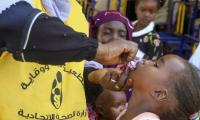Expressing concern over the increasing footprints of the Middle East-based Islamic State (IS) in Balochistan and northern Sindh, an Islamabad-based think tank has said that the terrorist outfit has claimed to have killed 153 people in deadly attacks in Pakistan in 2017.
In its Pakistan Security Report 2017 released on Sunday, the Pak Institute of Peace Studies (PIPS), a research and advocacy think tank, stated that although terrorist attacks decreased by 16 per cent in the last year, the threat to the country has far from lessened.
As per the report, militant, nationalist/insurgent and violent sectarian groups carried out a total of 370 terrorist attacks in 64 districts of Pakistan during the year 2017, including 24 suicide and gun-and-suicide coordinated attacks, killing 815 people and injuring 1,736.
Among them, 31 attacks took place in Sindh – 24 in Karachi and seven in rural Sindh – which claimed 119 lives and left 293 people injured. Most of the terrorism-related casualties in Sindh (91 dead, 250 injured) resulted from a single suicide blast at the revered shrine of Sufi saint Lal Shehbaz Qalanar in Sehwan Sharif, Jamshoro in February.
The report stated that 58 per cent of these attacks – a total of 213 – were carried out by the banned Tehreek-e-Taliban Pakistan (TTP), its splinter groups mainly Jamaatul Ahrar and other Taliban offshoot militant groups with similar objectives. These attacks claimed 186 lives in the country.
Similarly, nationalist/insurgent groups, mostly in Balochistan and a few in Sindh, carried out 138 attacks (37 per cent), killing 140 people. In Sindh, the Jeay Sindh Muttahida Mahaz, a proscribed Sindhi separatist group, was behind the attacks.
Moreover, as many as 19 terrorist attacks were sectarian-related, in which 71 people were killed and 97 others left wounded. The report added that security forces and law enforcement agencies killed a total of 524 militants in the past year, as compared to 809 in 2016, in 75 military/security operations as well as 68 armed clashes and encounters with the militants reported from across the four provinces and the Federally Administered Tribal Areas.
New risks
According to the report, despite a 16 per cent decline in terrorist attacks in 2017, the TTP and its associated groups remained the most potent threat, followed by Baloch insurgent groups.
However, at the same time, some new challenges also raised their heads. These included the emergence of self-radicalised individuals and small terrorist cells such as the Karachi-based Ansarul Sharia group, the growing incidence of religious extremism, including on educational campuses, and, most importantly, increasing footprints of the terror group Islamic State in parts of the country and the convergence of its fighters in Afghanistan near the Pakistan border.
As per the PIPS report, in 2017, the Islamic State and its local affiliates claimed six major terrorist attacks, killing 153 people. In Sindh, the group claimed to have carried out the attack on the shrine of Lal Shahbaz Qaldandar – the deadliest attack that year in terms of casualties.
In Balochistan, the group carried out a suicide attack on the convoy of Senate Deputy Chairman Maulana Abdul Ghafoor Haideri in Mastung, besides abducting two Chinese nationals from Quetta and killing them later.
The report also noted that compared to 2016, a significant surge of 131 per cent was witnessed during 2017 in cross-border attacks in the country from neighbouring Afghanistan, India and Iran. A total of 171 cross-border attacks claimed 188 lives and injured 348 others, it added.
Sindh Police personnel can be seen passing on a police vehicle in Karachi. — AFP/FileStreet crime in Karachi’s...
DG Sindh Food Authority, Agha Fakhr Hussain inspects the tea shop during the operation on February 17, 2024. —...
Jamaat-e-Islami Emir Hafiz Naeem ur Rehman addresses students who appeared in an aptitude test for the JI’s Bano...
A man holds a gun in this image. — Reuters/FileA 30-year-old man was shot and killed near Jamali Flyover on the...
Man puts his thumb impression on ballot book prior to issuance of a ballot paper to cast vote at a polling station in...
A representational image of double cabin vehicles. — ReutersThe Sindh High Court on Friday dismissed a petition...







